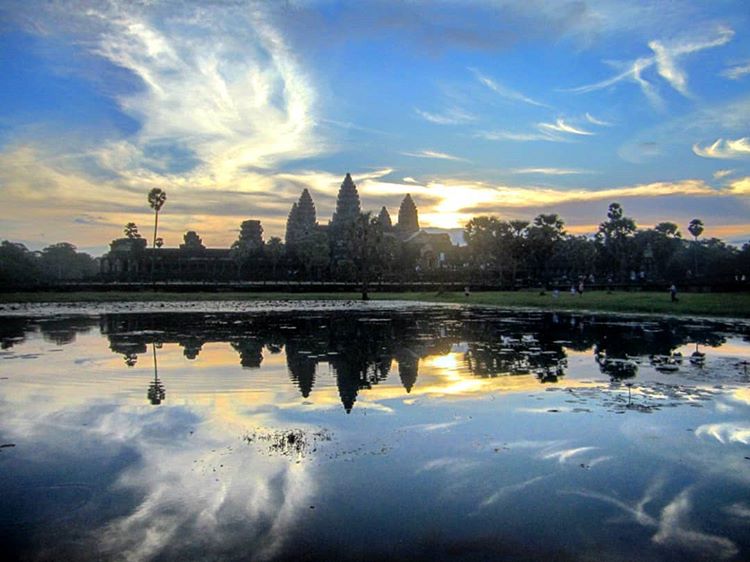15 important things to know before visiting Angkor Wat in Siem Reap
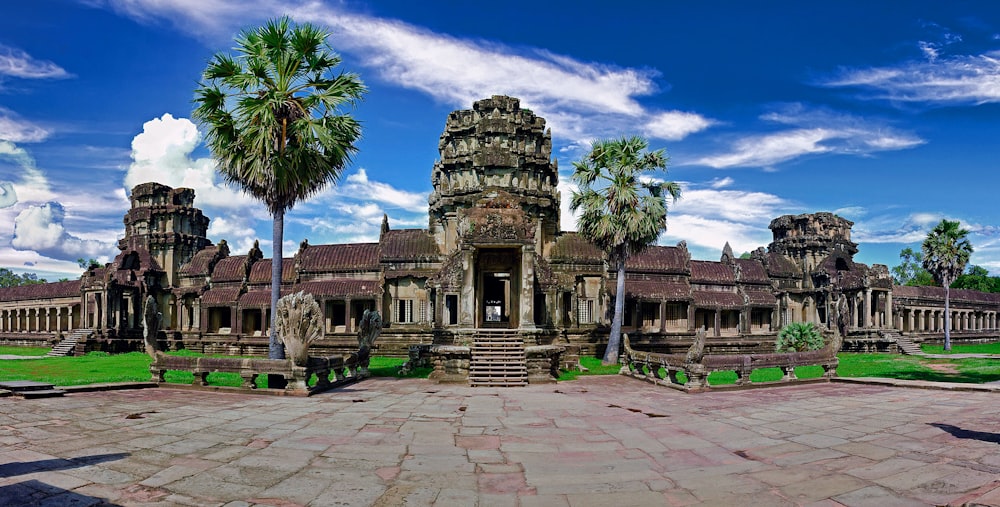
Each country is endowed with its own unique history, culture and identity. Cambodia, albeit its relatively small size, is home to one of the most well-known wonders of the world, Angkor Wat. The temple, with its meticulously crafted wall of artworks and majestic splendor, wows and enamors tourists far and wide. To satisfy your presumably aroused curiosity and help you plan your itinerary in Siem Reap, here are 15 important things to know before visiting Angkor Wat in Siem Reap.
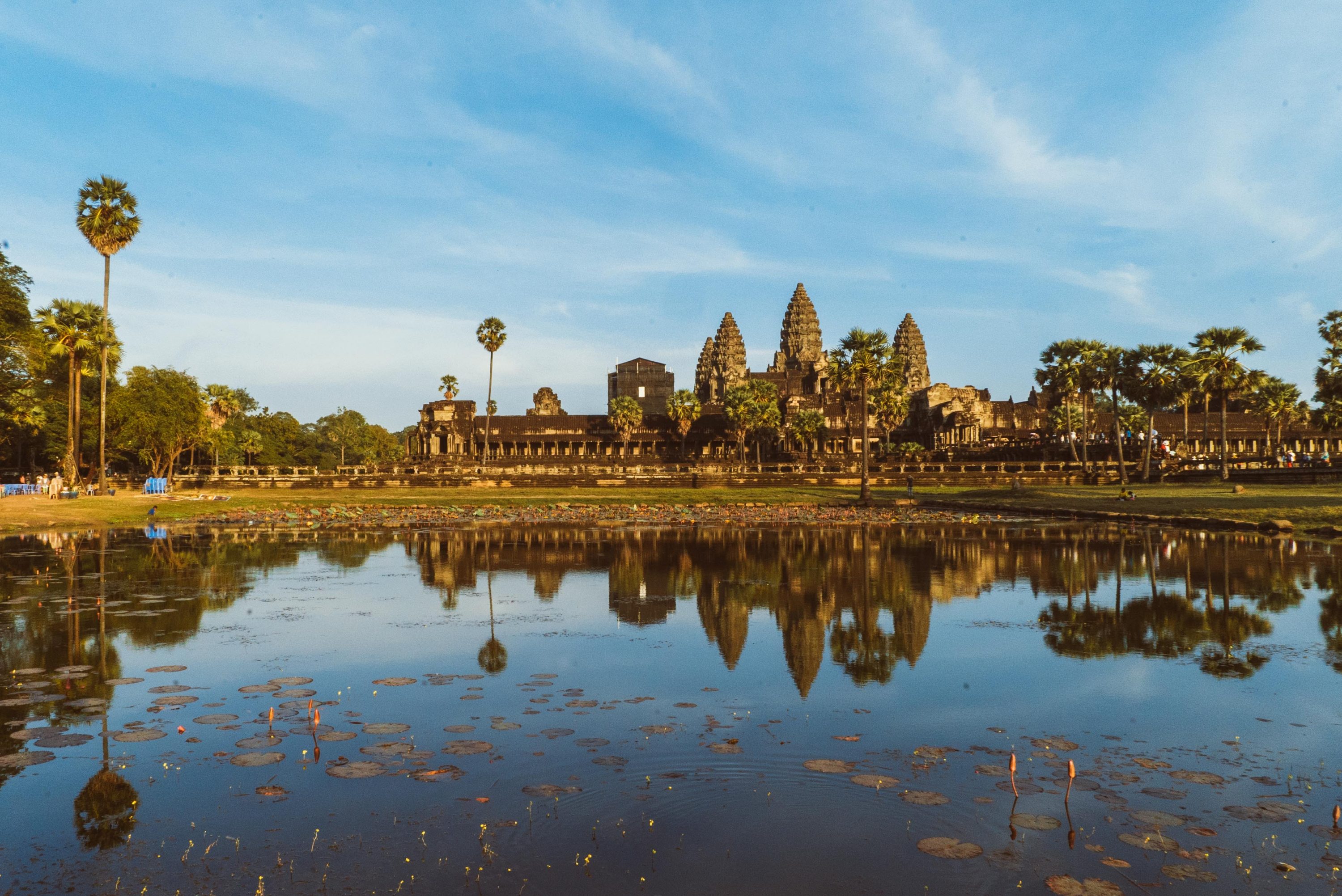
1. Why you should visit Angkor Wat
Angkor Wat is a temple complex located at the Northwest corner of Cambodia, a country of considerable size surrounded by Laos, Thailand and Vietnam. The entirety of Angkor’s sheer scale, which is staggering when we take into account the limited resource and technology available, is more than enough to rival that of all the Egyptian pyramids combined, exceeding that of today’s Paris. Angkor Wat, which translates into Capital Temple, is the largest religious monument in the world, occupying an impressive area of 162.6 hectares. The temple was constructed by King Suryavarman II in the first half of the 12th century and reached completion during the reign of King Jayavarman VII. The Capital Temple was originally a Hindu temple built in honor of Vishnu and was meant to become a state temple as well as the final resting place for Suryavarman II himself. However, through the latter half of the 12th century, Angkor Wat would gradually transform from a Hindu religious center into a Buddhist site. An epitome of Khmer architecture at its best, Angkor Wat, with its grandeur and harmonious architectural design, still upholds cultural significance, made evident by its predominant appearance on the Cambodian national flag and the acclaimed position as a World Heritage Site given by UNESCO. Read more: Amazing Things To Do In Angkor Wat
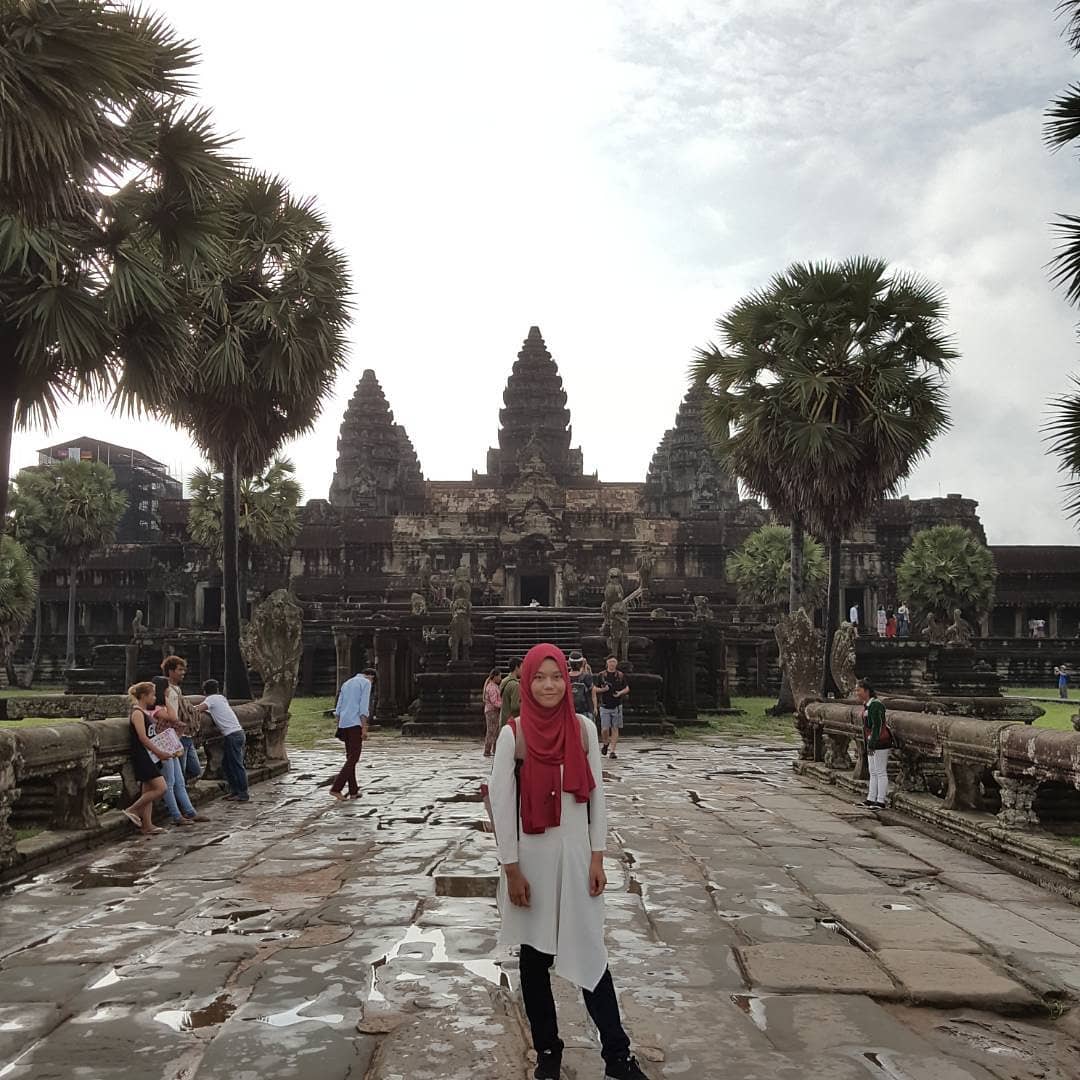
2. A layout of Angkor Wat
The Capital Temple lies North of Siem Reap and South of Angkor Thom. Its premise consists of a central structure of a temple mountain and galleried temple encompassed by a rectangular moat of 190 meter in width to ward off encroachment from the surrounding forest. Visitors can gain access through the West sandstone causeway, a later addition, which leads directly to the temple mountain in the center or via an earthen pathway in the East penetrating the thick vegetation outside.

The outer closure is made up of a wall 4.5 meter in height which has the measured dimension of 1024 meter by 802 meter. There are gopuras, giant stonework entrances, at each cardinal point and the West entrance is apparently the largest, which sees three ruined towers with connecting galleries. The visible forest that we observe from the Eastern earth bank was once the location of the city and royal palace. Due to their composition of perishable material, there is nothing left but outlines of former streets.
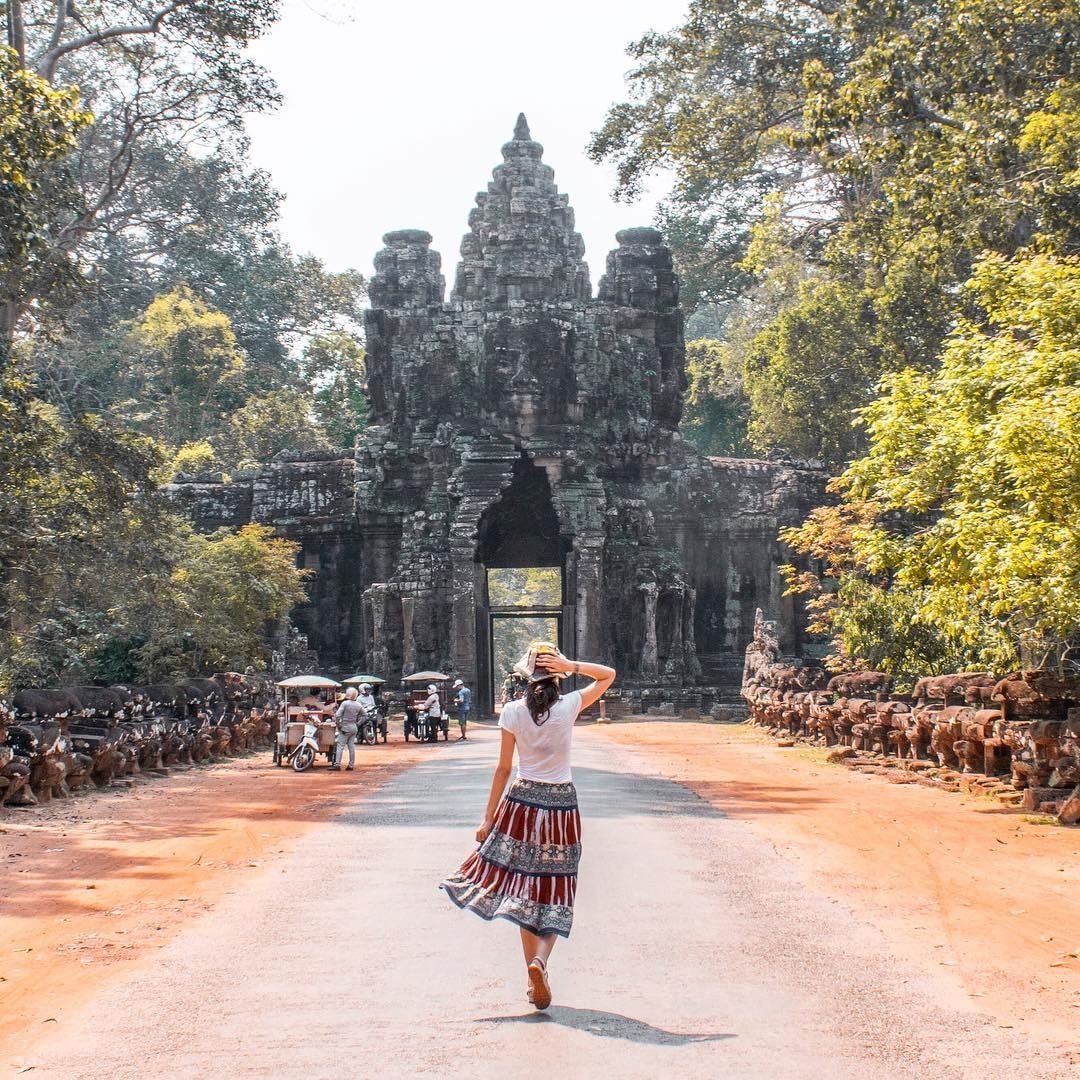
From the Western gopura, there lies a 350-meter-long walk way linking the outer closure with central temple. The central structure itself was built on the three incrementally high, raised terrace. There are also gopuras distributed in similar fashion to the outer closure’s wall on the topmost level. Each face of the temple mountain sees three sets of steep stairs leading to the outer gallery. In the middle is a cruciform gallery which contains the central shrine. From above, one can see four small corner towers and a larger one in the center. They are arranged in a formation of five dots on the facet of a dice, or to be more technical, a quincrux.
3. A brief history of the Angkor Wat
Legend has it that the god Indra ordered for the site to become a palace for his son Prechaket Mealea and that the place was constructed overnight by the hands of a divine architect. Angkok Wat may have been referred to as ‘Varah Vishnu-lok’ – ‘the dwelling of Vishnu’, which derives from its dedication to the said deity. In actuality, the temple was sacked by the Chams, the enemies of the empire, in 1177 during an assault via waterways, nearly 27 years after the demise of King Suryavarman II. The kingdom was later reclaimed by King Jayavarman VII, who established a new capital – Angkor Thom and a new state temple – Bayon, not far away from Angkor Wat. Towards the end of the 12th century, Angkor Wat gradually strayed away from its initial role as a center of Hinduism. Unlike many other Angkor temples, Angkor Wat was not forgotten but instead received preservation due to the advantage of protection from its moat. By 17th century, Angkor Wat had functioned as Buddhist temple. During the mid-19th century, the temple gain popularity in the West thanks to the work of Henri Mouhot, a French explorer and naturalist. In the 20th century, the restoration of Angkor Wat was interrupted by the Cambodian Civil War and Khmer Rouge. It was also ravaged by art thieves operating outside Thailand, resulting in the loss of statue heads or damage to the decorative carvings. 1992 saw its nomination as UNESCO World Heritage. Read more: 25 surprising facts about Angkor Wat complex
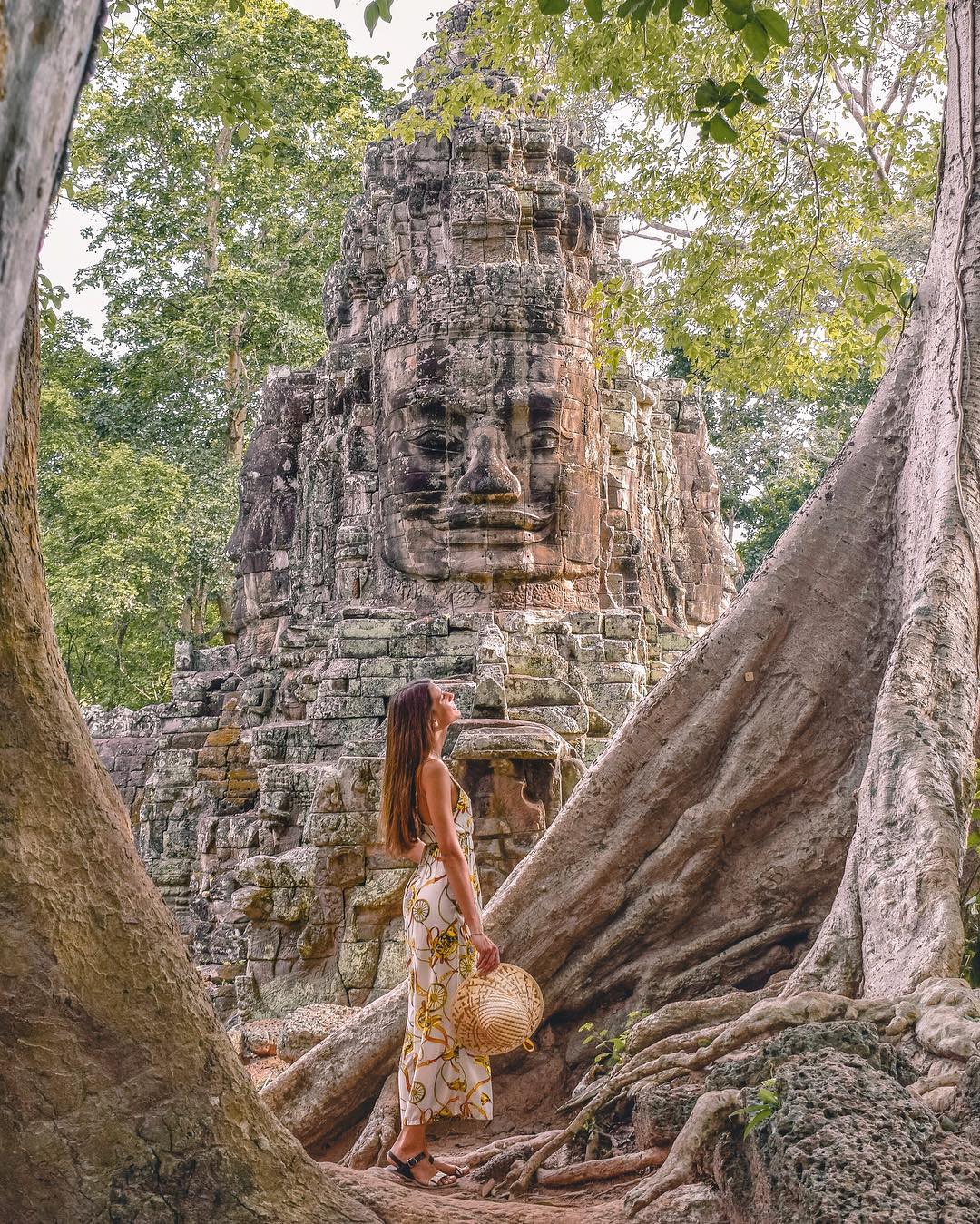
4. Angkor Wat amazing architecture
The location is a unique blend of a temple mountain, a distinguished feature of Khmer Empire state temples, and the concentric galleries. The temple is said to have some correlation to the movements of celestial bodies, most easily observed by its dimension and the towers’ alignment with the sun at solstice. The five towers in the central structure are claimed to represent Mount Meru, sometimes called Sumeru, the mystical five-peak mountain, home to the gods of Hinduism, while the walls and moat resemble the mountain ranges and ocean around Mount Meru. Another noticeable difference from the other Angkor temples is Angkor Wat’s orientation to the West rather than the East. This can probably be attributed to its house deity Vishnu, whose association is with the West. Most of the visible areas are built in sandstone while the rest is of laterite. Angkor Wat’s harmony in design was praised by many as a result of the integration of remarkably meticulous details into the towering and grand overall construct.
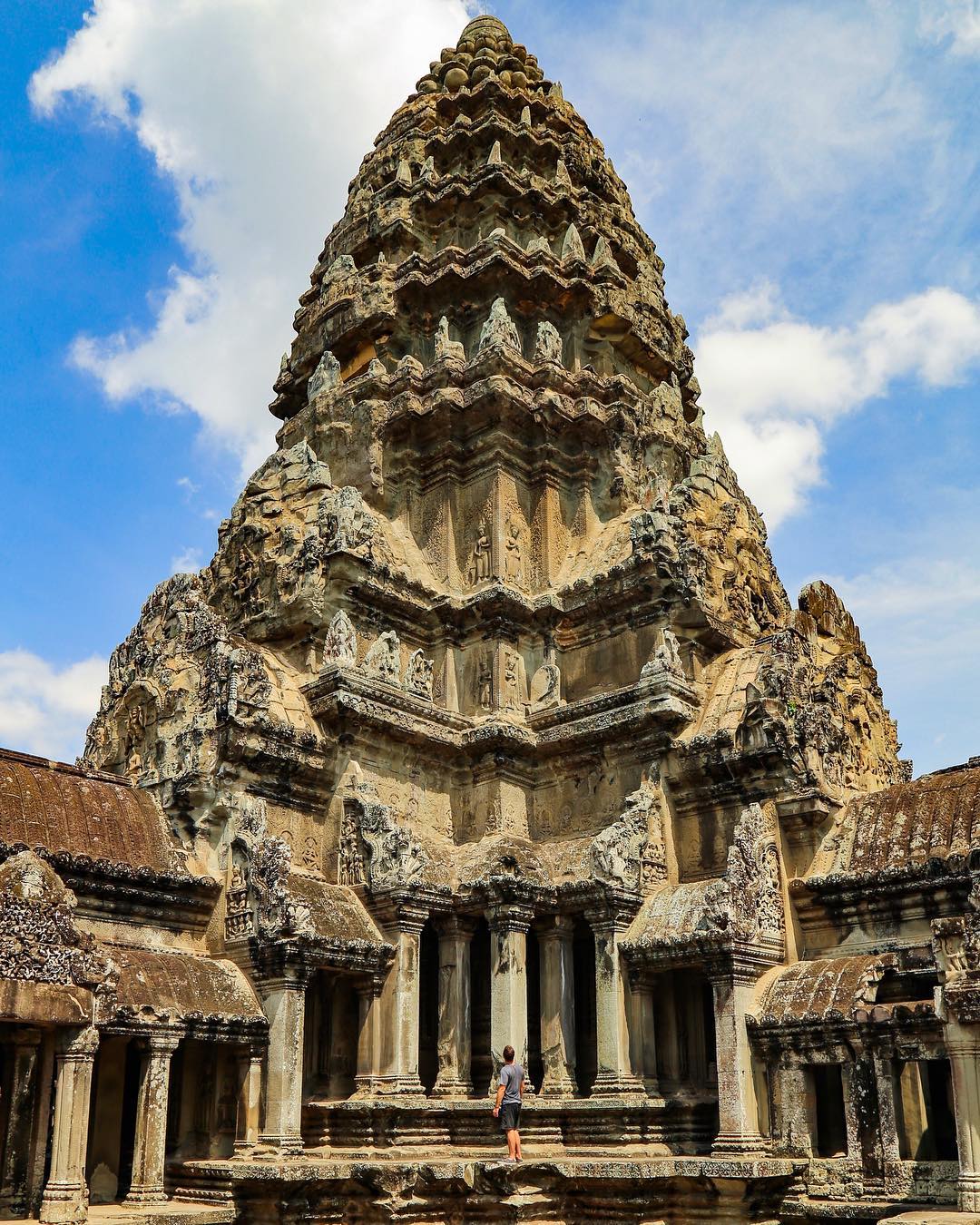
5. The beautiful decorations that embellish the walls of Angkor Wat
Much to the grandeur that is Angkor Wat are its extensive decorations in the form of bas-reliefs friezes. The temple has never failed to astound visitors with its level of refinement and the diversity in details. On the wall of the temple you can find large scale depictions of scenes from religious texts, such as episodic representation of Hindu epics. Bearing resemblance to Egyptian hieroglyphic writing, the bas-reliefs must be interpreted in a linear arrangement. In the Western section, you will find the Battle of Lanka in the epic Ramayana, which spoke of the defeat of Ravana at the hands of Rama, and the Battle of Kurukshetra, which told about the annihilation of the Kaurava and Pandava clans. The Southern part of the temple houses the historical scene of King Suryavarman II’s procession and the 32 hells as well as 37 heavens in Hinduism. The “Churning of The Great Sea of Milk’ is located in the Eastern section while the Northern one displays Krishna victory over Bana and the battle between gods and asuras. Angkor Wat’s beauty is accentuated by an array of statues and carvings depicting apsaras and devatas.
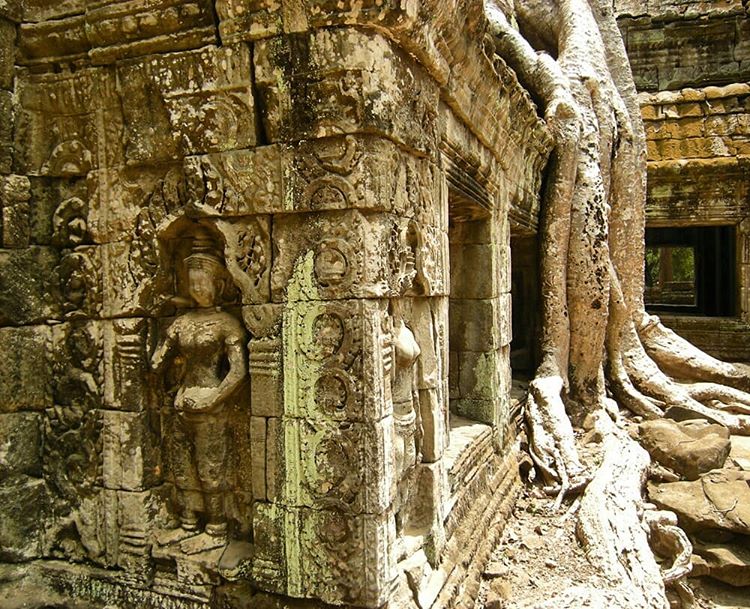
6. The temple’s jaw-dropping assemblage
If you have ever been to a pyramid in Egypt, where the stone blocks are cut and put together with the utmost precision, to such an extent that even a razor blade cannot be put in between, then you will appreciate Angkor Wat just as equally, if not more. The stones in use share the smoothness of marble, all of which are laid with an absence of adhesives such as mortar but rather held together by extremely tight joints, or mortise and tenon in some cases, that is quite hard to distinguish. Many assumptions suggest that the temple was built with the assist of elephants, coir rope, an elaborate system of pulleys and bamboo scaffolding. As far as assumptions go, the sheer number of stone blocks, which is between 5 and 10 million and weighs 1.5 ton per block, still amazes while simultaneously baffles scientists. The process of maneuvering limestones quarried from 0.5 kilometer away to build the pyramid seems pale in comparison to the 40-kilometer long distance that took to transfer sandstone blocks to construct Angkor Wat. What should also be taken into consideration is the fact that almost every surface imaginable was covered in intricate carvings. The wall of the gallery alone constitutes 1000 square meters of bas-reliefs. There are holes on the walls which could possibly be indicative of bronze plating, which was sought after by robbers in ancient times.
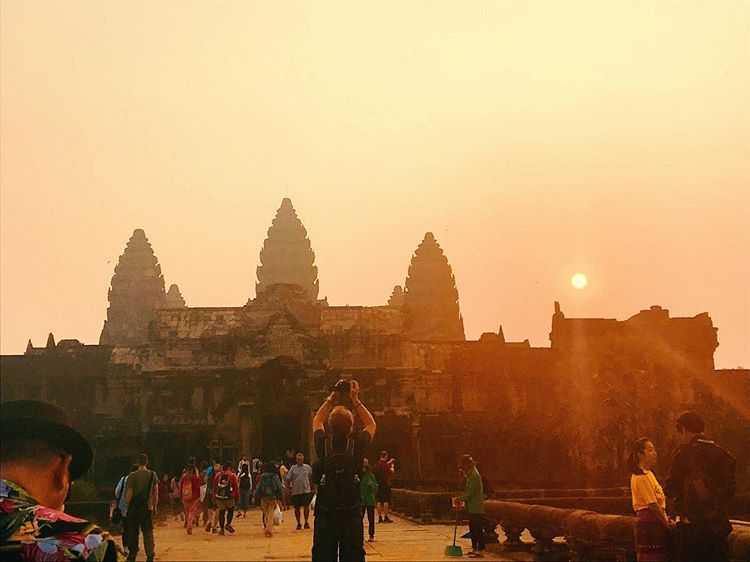
7. The strict dress code at Angkor Wat
Just like many sites of religious and cultural significance that strictly employ a dress code, Angkor Wat is no exception. After a series of offenses, indecent exposure to be specific, by foreign visitors ignited vitriolic responses on part of Cambodians and global citizens, then came the strictest enforcement of dress code in August 2016. So one thing you must know is that you need to keep your shoulders and knees covered and fight back the temptation of a fashionable tank top or halter-neck or risk being deemed too inappropriate for entry to Angkor Wat.
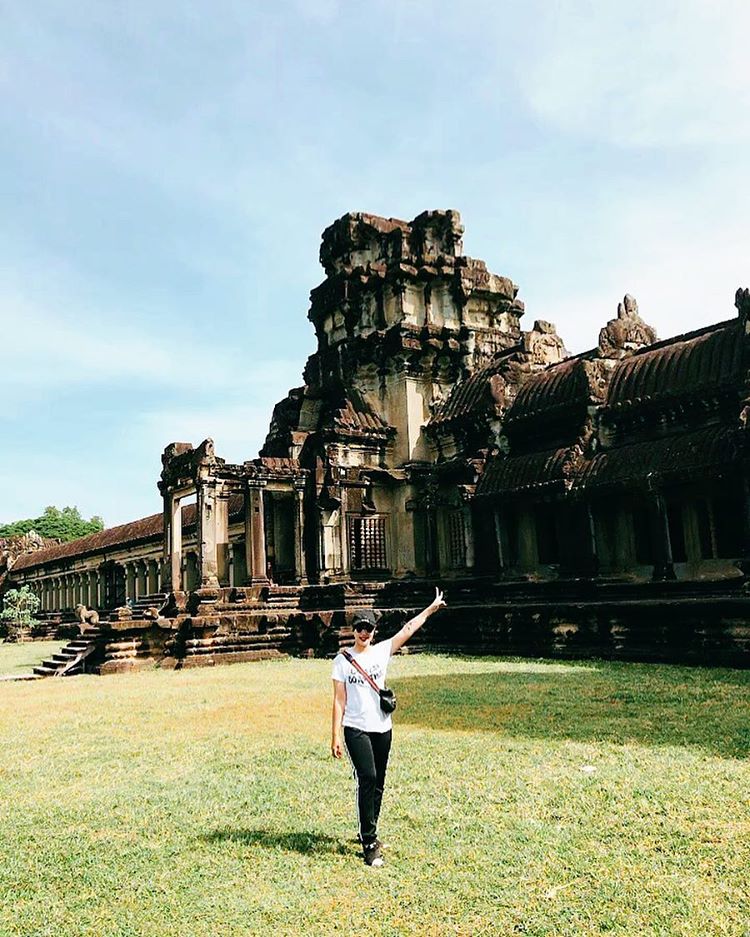
8. The best time to visit Angkor Wat
If you are on a tight schedule and can only explore the place in one day, which is a genuine pity, then the best time to start is around 5 to 6am when you can watch sunrise at Angkor Wat. As the sunlight slowly uncovers the view, you can’t help but be overwhelmed by the dramatically enchanting beauty which belongs to a different era. This is also a great time because of the coolness from the night before is a lot more inviting than scorching sun that soon follows. The best time of the year to visit is actually from November to March, which brings dry and mild weather. The wet season begins in June and ends in September, during which Angkor Wat is lush green and full of life but poses a hindrance to traveling from one temple to another. April should be avoided due to the sweltering hot weather. Since Angkor Wat is the crown jewel of Cambodia, it is bustling with tourist all year round.
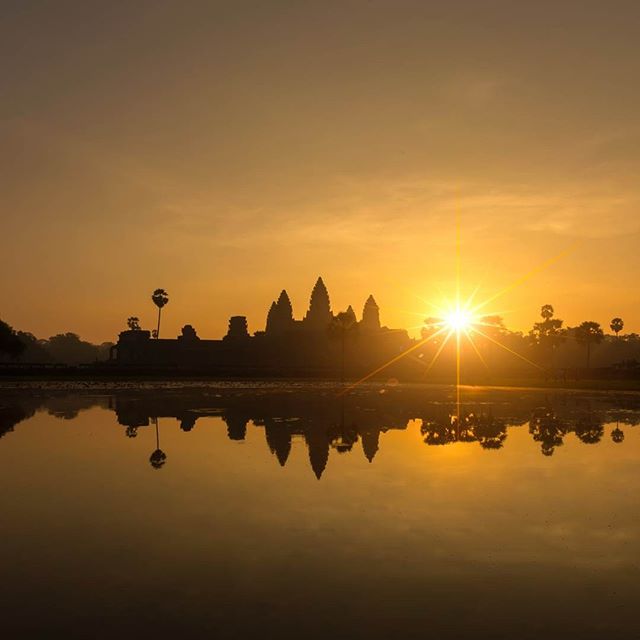
9. Some other things to keep in mind
As a common sight in many developing countries, especially at tourist sites like this, you will often be surrounded with children or random person asking for money. Difficult as it maybe, please say no, as this well-intentioned gesture is considered an act of perpetuating the endemic poverty that has befallen Cambodia. Keeping your noise level to a minimum is also highly recommended. This does not mean you have to be quiet the whole trip or whisper into each other’s ears, but rather you ought to avoid shouting or raising your voice.
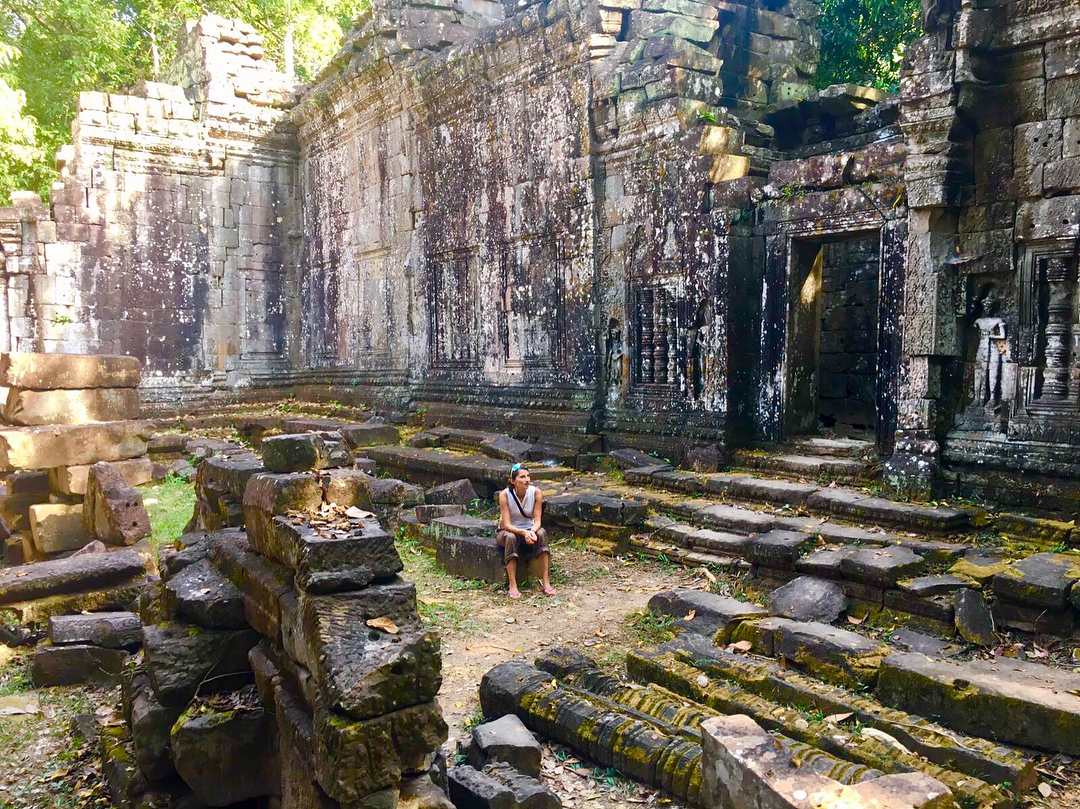
10. Be respectful and do not smoke
Just because the sight of some locals or tourists smoking is rather obvious does not and will not mean that should take out a pack and start puffing smoke. With Angkor Wat being a smoke-free zone since 2012, you must push back the urge to light up a cigarette until you reach an area where smoking is allowed. One more thing to know is that monks hold this place in high spiritual and cultural regard. Therefore, be respectful towards them, and refrain from pointing cameras at them. Always ask for permission. Also remember that women must neither touch nor sit too close to the monks.
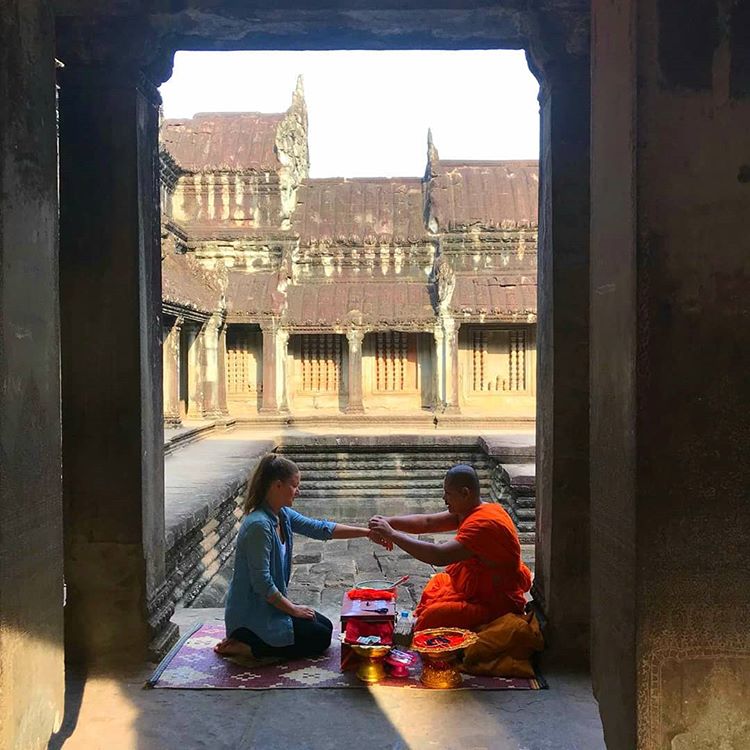
11. Available tours at Angkor Wat
Since the boom of globalization, Angkor Wat has received renewed interests and the subsequent increased tourist influx. In response to that, there is a plethora of Angkor Wat tours available for your choosing. Many of these are fully customizable, ready to cater to your interests and comes with an English-fluent local guides. You can absolutely opt for a whole day tour to go through all the iconic landmarks besides Angkor Wat in Angkor Archeological Park, such as Angkor Thom, Bayon Temple or Baphuon, Phimean Akas, Elephant Terrace, Leper King Terrace, etc. The order of activities is not fixed, which is really convenient for you.
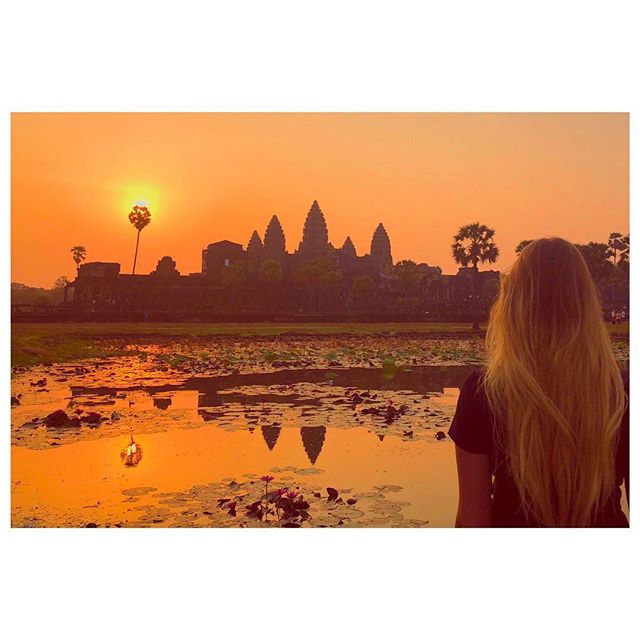
12. Price of entry for Angkor Wat
Some may be wondering whether Angkor Wat is worth the price of 37 USD. It is beyond the shadow of the doubt that there are sites asking for a considerably more hefty entrance fee while having little to see. One thing guaranteed is that Angkor Archeological Park has much more to offer. One 37-USD ticket grants you access to all sites in the park in one day. But trying to see everything in a mere one day is such a daunting task. So you can opt for a three-day ticket at a price of 62 USD. However, beware of counterfeit and trust no one stating with certainty that they can get you a cheaper price. You can get your ticket at Angkor Enterprise at Street 60, Krong Siem Reap, Cambodia and do not be wary as the tuk-tuk drivers know exactly where to go.
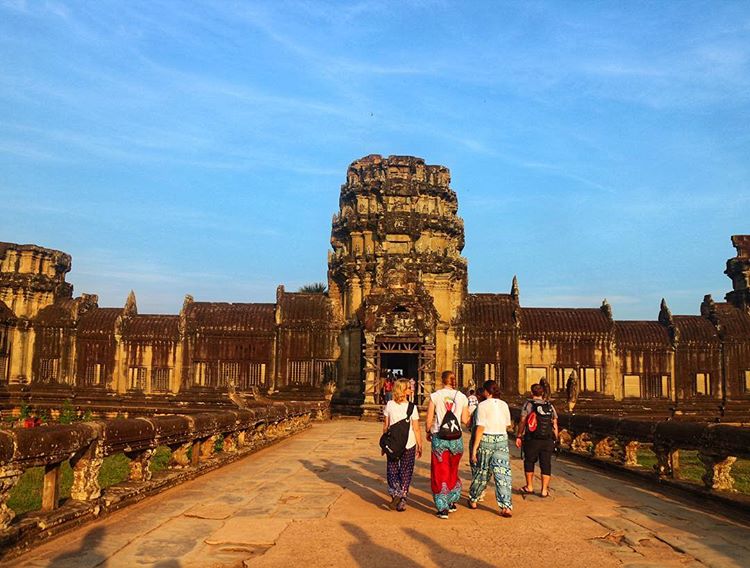
13. How to get around the temple
As tourists are not allowed to drive within the premise, you will have to walk or hire vehicles. If you choose to walk, then you have much much to cover on foot. There are facilities which offer rental bicycles. So if you are a bit sporty and quite certain that you can endure the heat, rent one and embark on a long bike trip. A third option is to hire a tuk-tuk or van driver to take you around the complex. Most of the drivers are very enthusiastic as they will have the chance to make good money. So be prepared to negotiate a price and if the driver is friendly and helpful, stick with him as bargaining with locals can be challenging.
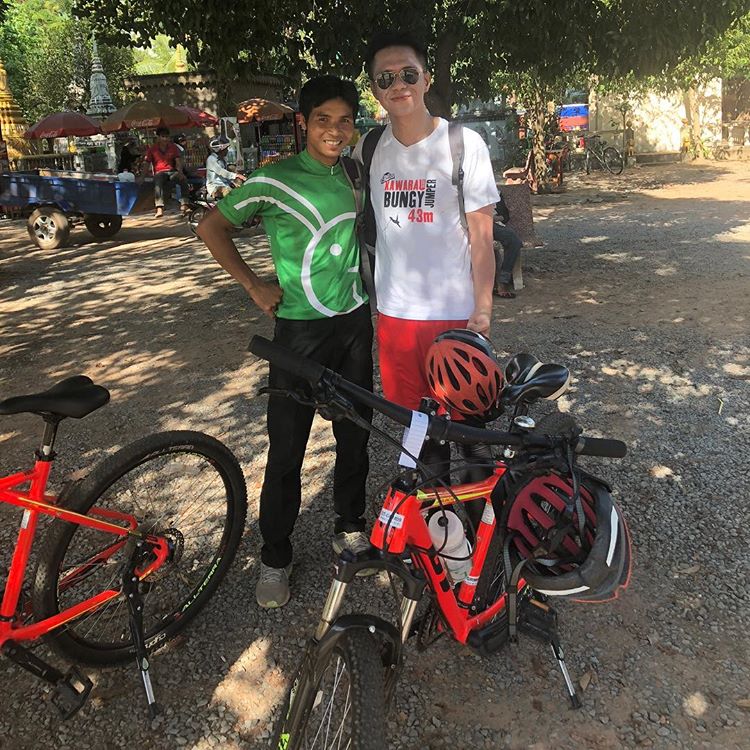
14. Where to stay when visiting Angkor Wat
As our main objective is to explore the temple, an ideal accommodation should be within the proximity of the complex. Serving as the famed gateway to the Angkor temples, Siem Reap, the closest city to Angkor Wat and the largest city in Cambodia, is a perfect option. Thanks to the flourishing tourism, Siem Reap has developed non-stop to become a friendly and modern city with a great selection of resorts, shops and attractions. If you are in search for a place to stay then the Summer Villa Resort is a great choice offering a wide range of amenities at a reasonable price. Although the place is outside of town and a bit difficult to find, it also means an escape from the bustling and tourist-filled streets. The resort is located at Boeung Dounhpa Village, Slar Kram Commune, Krong Siem Reap. A double room with breakfast included can cost around 27 USD per night.
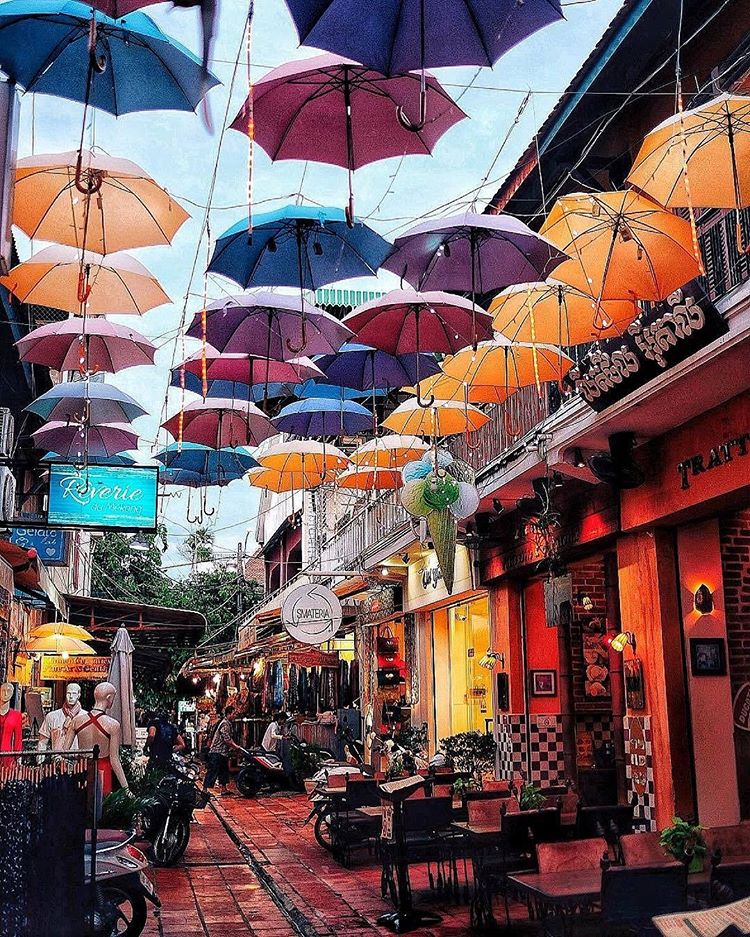
15. The best way to visit Angkor Wat
Provided that you are not pressed for time, then you should visit Angkor Wat at sunset on your first day to take in the exceptional ambience of the temple. Start your second day early by visiting Angkor Wat at sunrise. Proceed to explore it for the rest of the day. Then on the third day, you can direct your attention to other attractions in the Angkor Archeology Park such as The South Gate, The Bayon temple, Elephant Terrace and Terrace of Leper King. Should you be hungry, stop refill your energy at some eateries beside the garden.
